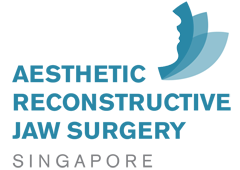Share this
Cosmetic jaw surgery Singapore- the consultation visit.
on November 11, 2015

When I first started cosmetic jaw surgery twenty years ago, the needs of the patients are somewhat simpler than today. The patients then usually have an obvious need for surgery. In fact, many of them have dentofacial deformities that are so obvious that my front desk can predict pretty accurately what kind of surgery they are going to have as they register at the counter. Today’s patients are quite different. Of course, there are still many whose needs are obvious but increasingly, there are many patients who are looking for cosmetic enhancements that are rather minor but cannot be achieved without bony surgery. Even among the group of relatively “obvious” cases, the outcomes desired are pretty specific. Today, the biggest challenge in cosmetic jaw surgery is not surgically related. The techniques are well established and refined and complications relating to techniques are well under control. The challenge lies in fulfilling the patient’s aesthetic objectives. To this end, the process between the first consultation and the surgery becomes of paramount significance. So, what does this process entail.
- Putting thoughts into words…
The first thing that I must obtain from the patient is a verbal account of what she hopes to achieve through jaw surgery. Some patients are quite shy about this and it takes some time to get them to verbalize what they have in mind. This process may take more than one visit but it is very important to establish before surgery. By describing her desired outcome in words, the patient affirms for herself the vague idea that she has in her mind. If she has difficulty verbalizing, I would usually ask her to produce a photo of herself and indicate on the photo what she likes and what she doesn’t like and how she would like those parts changed. Sometimes, to get a sense of the patient’s aesthetic taste, I may asked for an example of a celebrity that she finds appealing. Some may like the Angelina Jolie kind of face, with well-defined sharp facial features while others may prefer the softer look of the Korean actresses. The idea is not to try to look like a celebrity but to get a sense of the patient’s inclination.
- Measuring the face…
With that, information, a preliminary facial aesthetic assessment is done. I look for general facial proportions and symmetry. The individual facial features are also assessed even if they are not correctable with orthognathic surgery. In particular, the nose, as changes in the dentofacial structure can change the appearance of the nose due to a change in proportions. The general oral hygiene is also assessed together with the state and alignment of the teeth.
- Taking records….
After this preliminary assessment, I will have a rough idea of what kind of surgery may be needed. I can narrow down to several options. However, to work out a definitive plan, more information is needed. If the patient is still keen to explore further, records can be taken at the first visit. A full face CT scan and a set of facial and intraoral photos are needed. Impressions of the teeth will also be needed to make dental casts. A facebow transfer will then be done to mount the dental casts onto an articulator, which is sort of like a jaw simulator. Bite registration is also taken to relate the upper cast to the lower cast on the articulator.
- In between visits….
Thereafter, an appointment is made one to two weeks later. During this period, I will load the CT scan data onto a planning and simulation software and map the photos onto the CT-generated soft tissue model of the patient’s face. Various surgical options are then tried out on the computer and the software will generate a prediction of the soft tissue facial changes that will accompany the respective bony surgeries.
- Using technology …..
At the next visit, the various plans on the software are discussed so as to get an even better sense of what the patient prefers. There is no one plan that fits all. The surgical procedures may not differ significantly from patient to patient but the type and degree of movements of the jaws are unique to each patient. Sometimes, we cannot agree on a plan at this visit and I will go back to the drawing board and arrange another appointment to explore further. Each plan has its pros and cons and we need to spend adequate time to explore what the patient values. Most patients get more confident about what they like during the process and will increasing voice their opinions. It is then my job to assess what expectations are realistic and what are not. Only when we can come to an agreement, ie a plan that is workable and is able to achieve most of the patient’s treatment goals do we proceed to the next stage.
- Success cannot be guaranteed….
Regardless of the care taken at this stage, communication is not flawless. There will be situations where the patient is not entirely happy with the outcome but through this protracted consultation phase, we hope to minimize such cases. I will write about what happens after a plan is agreed upon in the next blog.
Share this
- Jaw Surgery (93)
- Dental Implants Singapore (90)
- Orthognathic Surgery (48)
- Replacing Missing Teeth (26)
- Missing Teeth Options (23)
- Underbite (23)
- Bone Grafting (21)
- Costs (18)
- Facial Aesthetics (18)
- Aesthetics (17)
- dental implants (16)
- corrective jaw surgery (15)
- BOTOX (11)
- Dermal Fillers (11)
- Wisdom teeth (10)
- Fixed Implant Dentures (8)
- Loose Dentures Singapore (6)
- Medisave (6)
- sleep apnea (6)
- Braces (5)
- Dental Pain (5)
- Dentures in Singapore (5)
- Loose Teeth (5)
- Tooth Extraction (5)
- jaw deformities (5)
- bimax (4)
- bone graft (4)
- maxillomandibular advancement (4)
- all-on-4 (3)
- bimaxillary protrusion (3)
- chin implant (3)
- facial asymmetry (3)
- full mouth dental implants (3)
- genioplasty (3)
- immediate implant (3)
- removal of an integrated dental implant (3)
- third molars (3)
- wisdom tooth surgery (3)
- My Dentures Don't Fit (2)
- VME (2)
- bone graft healing (2)
- distraction osteogenesis (2)
- medical tourism (2)
- obstructive sleep apnea (2)
- orthodontics (2)
- plastic surgery (2)
- CT guided dental implants (1)
- Double jaw surgery (1)
- Invisalign (1)
- Periodontal Disease (1)
- Permanent Dentures Singapore (1)
- before and after photos (1)
- facial trauma (1)
- fractured dental implant (1)
- oral appliance therapy (1)
- root canal treatment (1)
- veneers (1)
- vertical maxillary excess (1)
- September 2019 (2)
- July 2019 (2)
- May 2019 (2)
- August 2018 (1)
- October 2017 (1)
- September 2017 (2)
- August 2017 (1)
- June 2017 (2)
- May 2017 (4)
- April 2017 (1)
- March 2017 (1)
- February 2017 (3)
- January 2017 (3)
- December 2016 (1)
- November 2016 (2)
- October 2016 (4)
- September 2016 (9)
- August 2016 (5)
- July 2016 (11)
- June 2016 (14)
- May 2016 (6)
- April 2016 (2)
- March 2016 (1)
- January 2016 (7)
- December 2015 (10)
- November 2015 (4)
- October 2015 (9)
- September 2015 (7)
- August 2015 (1)
- July 2015 (6)
- June 2015 (3)
- May 2015 (7)
- April 2015 (5)
- March 2015 (8)
- January 2015 (5)
- December 2014 (7)
- November 2014 (7)
- October 2014 (6)
- September 2014 (8)
- August 2014 (5)
- July 2014 (7)
- June 2014 (8)
- May 2014 (9)
- April 2014 (10)
- March 2014 (6)
- February 2014 (8)
- January 2014 (3)
Subscribe by email
Email subscription




Comments (1)